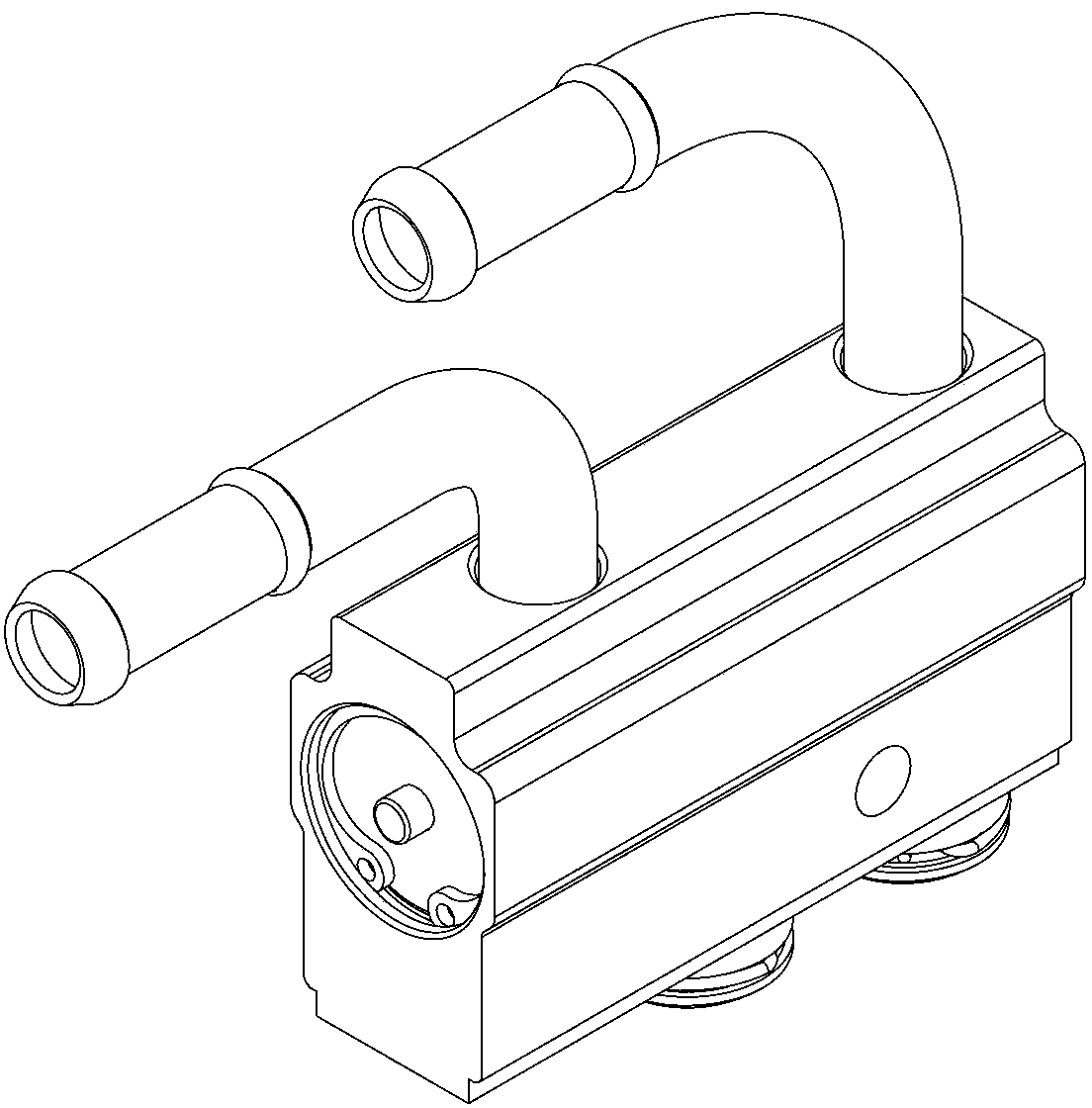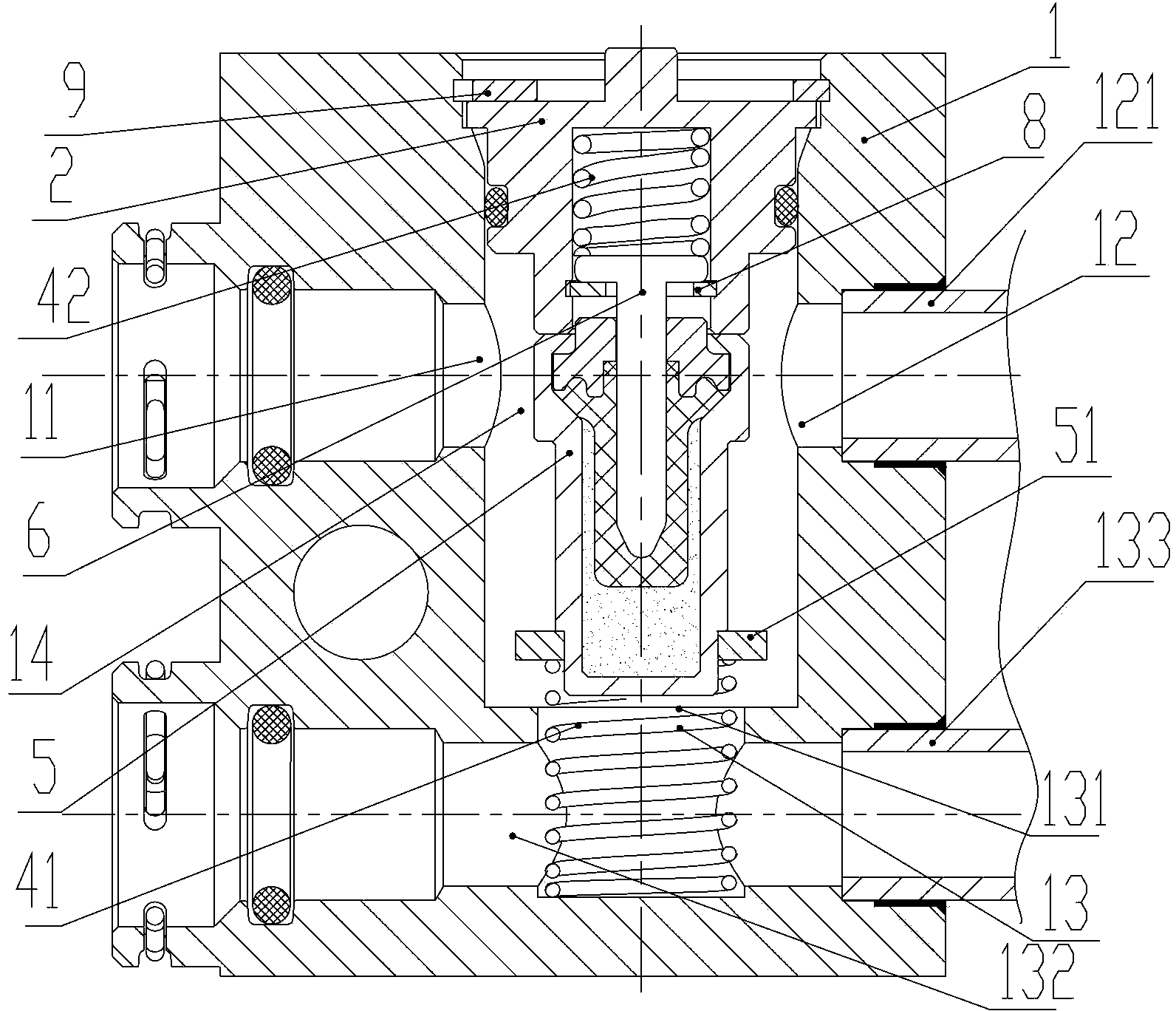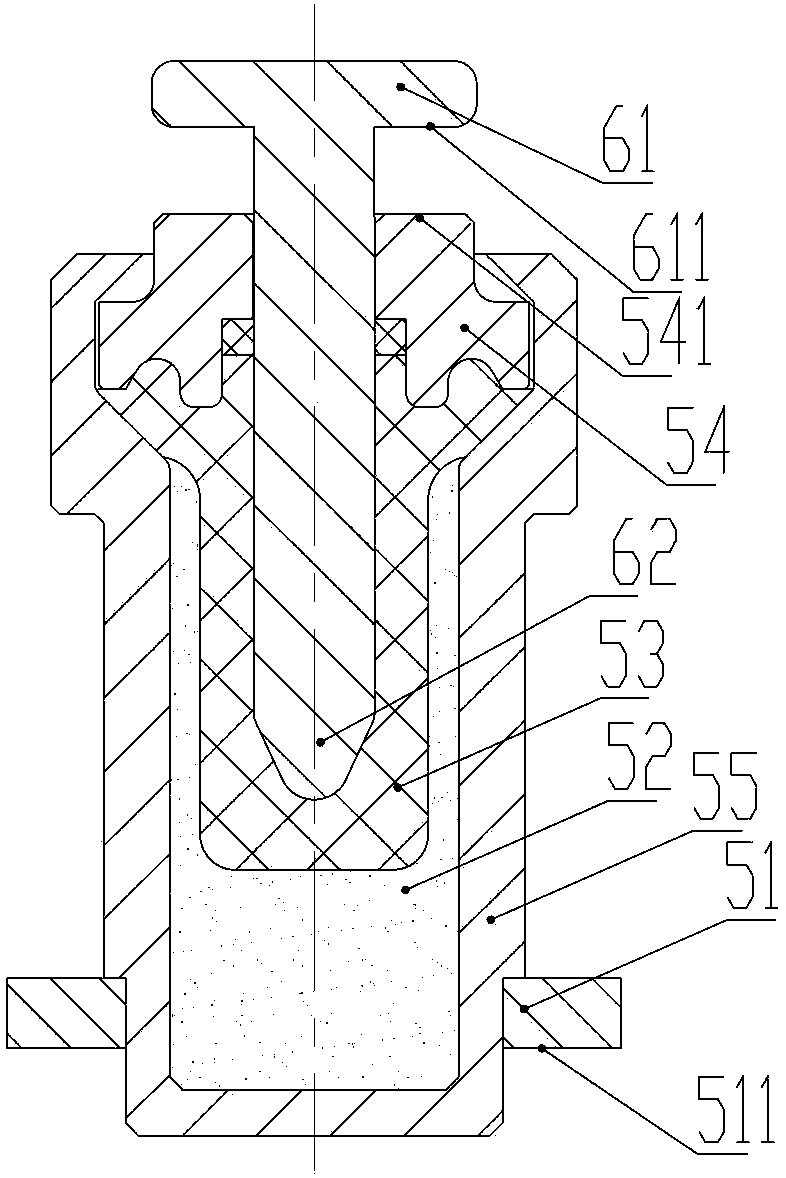Temperature regulator
A thermostat and push rod technology, applied in the field of heat exchange, can solve problems such as hose damage, and achieve the effect of ensuring service life
- Summary
- Abstract
- Description
- Claims
- Application Information
AI Technical Summary
Problems solved by technology
Method used
Image
Examples
specific Embodiment approach
[0037] The orientation nouns such as top, bottom, left, right, up, and down mentioned in this manual are all described according to the relationship between up, down, left, and right in the drawings; in addition, some orderings such as first, second, etc. are mainly for the sake of clarity. distinction, and should not be construed as limiting the invention. The initial deformation force of the second elastic element 42 mentioned in this specification means that when the second elastic element 42 is compressed and deformed just under the pressure of the push rod, the stopper that limits the position of the push rod just no longer bears the first The pressure exerted by the second elastic element 42 is the pressure that the second elastic element 42 bears or its elastic force.
[0038] Figure 1 to Figure 3 It is the first embodiment of the thermostat of the present invention. The thermostat includes a valve body 1 provided with an accommodating cavity 14 and a thermodynamic el...
PUM
 Login to View More
Login to View More Abstract
Description
Claims
Application Information
 Login to View More
Login to View More - R&D
- Intellectual Property
- Life Sciences
- Materials
- Tech Scout
- Unparalleled Data Quality
- Higher Quality Content
- 60% Fewer Hallucinations
Browse by: Latest US Patents, China's latest patents, Technical Efficacy Thesaurus, Application Domain, Technology Topic, Popular Technical Reports.
© 2025 PatSnap. All rights reserved.Legal|Privacy policy|Modern Slavery Act Transparency Statement|Sitemap|About US| Contact US: help@patsnap.com



